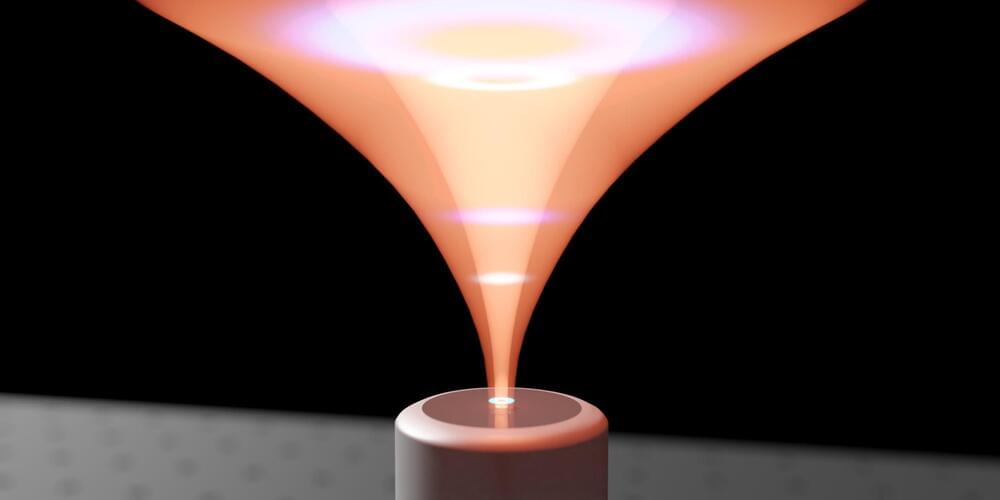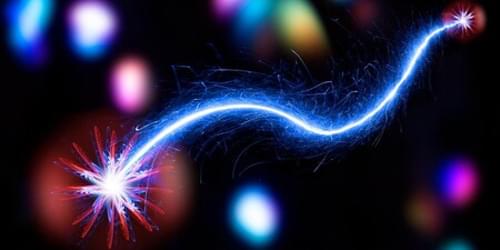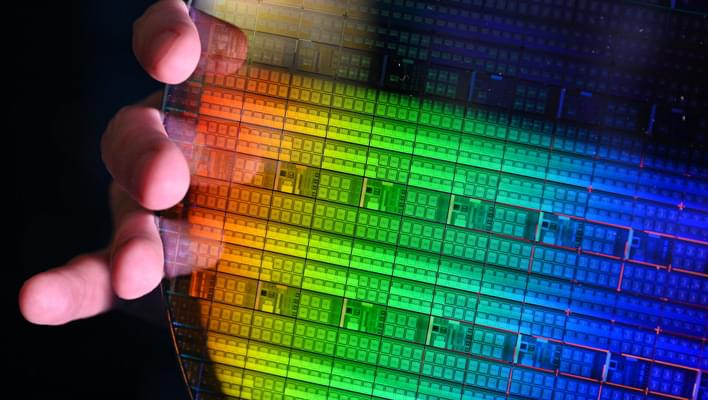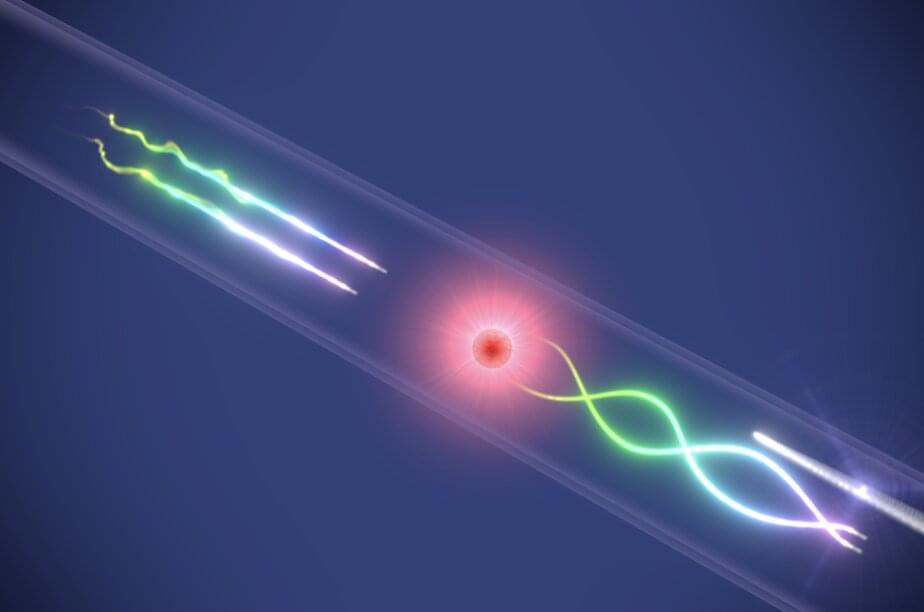The Nobel Prize in physics this year has been awarded “for experiments with entangled photons, establishing the violation of Bell inequalities and pioneering quantum information science.”…



Optics, the study of light, is one of the oldest fields in physics and has never ceased to surprise researchers. Although the classical description of light as a wave phenomenon is rarely questioned, the physical origins of some optical effects are. A team of researchers at Tampere University have brought the discussion on one fundamental wave effect, the debate around the anomalous behavior of focused light waves, to the quantum domain.
The researchers have been able to show that quantum waves behave significantly differently from their classical counterparts and can be used to increase the precision of distance measurements. Their findings also add to the discussion on physical origin of the anomalous focusing behavior. The results are now published in Nature Photonics.
“Interestingly, we started with an idea based on our earlier results and set out to structure quantum light for enhanced measurement precision. However, we then realized that the underlying physics of this application also contributes to the long debate about the origins of the Gouy phase anomaly of focused light fields,” explains Robert Fickler, group leader of the Experimental Quantum Optics group at Tampere University.

The 2022 Nobel Prize in Physics honors research on the foundations of quantum mechanics, which opened up the quantum information frontier.
7 October 2022: We have replaced our initial one-paragraph announcement with a full-length Focus story.
The Nobel Prize in Physics this year recognizes efforts to take quantum weirdness out of philosophy discussions and to place it on experimental display for all to see. The award is shared by Alain Aspect, John Clauser, and Anton Zeilinger, all of whom showed a mastery of entanglement—a quantum relationship between two particles that can exist over long distances. Using entangled photons, Clauser and Aspect performed some of the first “Bell tests,” which confirmed quantum mechanics predictions while putting to bed certain alternative theories based on classical physics. Zeilinger used some of those Bell-test techniques to demonstrate entanglement control methods that can be applied to quantum computing, quantum cryptography, and other quantum information technologies.

The proton is a composite particle made up of fundamental building blocks of quarks and gluons. These components and their interactions determine the proton’s structure, including its electrical charges and currents. This structure deforms when exposed to external electric and magnetic (EM) fields, a phenomenon known as polarizability. The EM polarizabilities are a measure of the stiffness against the deformation induced by EM fields. By measuring the EM polarizabilities, scientists learn about the internal structure of the proton.
This knowledge helps to validate scientific understanding of how nucleons (protons and neutrons) form by comparing the results to theoretical descriptions of gamma-ray scattering from nucleons. Scientists call this scattering process nucleon Compton scattering.
When scientists examine the proton at a distance and scale where EM responses dominate, they can determine values of EM polarizabilities with high precision. To do so, they use the theoretical frame of Effective Field Theories (EFTs). The EFTs hold the promise of matching the description of the nucleon structure at low energies to the current theory of the strong nuclear force, called quantum chromodynamics (QCD). In this research, scientists validated EFTs using proton Compton scattering. This approach also validated the framework and methodology that underlie EFTs.


Today, one of the biggest paradoxes in the universe threatens to unravel modern science: the black hole information paradox. Every object in the universe is composed of particles with unique quantum properties and even if an object is destroyed, its quantum information is never permanently deleted. But what happens to that information when an object enters a black hole? Fabio Pacucci investigates. [Directed by Artrake Studio, narrated by Addison Anderson, music by WORKPLAYWORK / Cem Misirlioglu].

Photons, particles that represent a quantum of light, have shown great potential for the development of new quantum technologies. More specifically, physicists have been exploring the possibility of creating photonic qubits (quantum units of information) that can be transmitted over long distances using photons.
Despite some promising results, several obstacles still need to be overcome before photonic qubits can be successfully implemented on a large-scale. For instance, photons are known to be susceptible to propagation loss (i.e., a loss of energy, radiation, or signals as it travels from one point to another) and do not interact with one another.
Researchers at University of Copenhagen in Denmark, Instituto de Física Fundamental IFF-CSIC in Spain, and Ruhr-Universität Bochum in Germany have recently devised a strategy that could help to overcome one of these challenges, namely the lack of photon-photon interactions. Their method, presented in a paper published in Nature Physics, could eventually aid the development of more sophisticated quantum devices.

Intel Corp.’s two primary research organizations, Intel Labs and Components Research, announced today that they’re making big progress as they work toward large-scale production of quantum computing processors.
At the 2022 Silicon Quantum Electronics Workshop in Orford, Quebec, Intel’s researchers said that they’ve been able to demonstrate the highest reported yield and uniformity rate when manufacturing “silicon spin qubit devices” at the company’s transistor research and development facility. The research is believed to be a key milestone for Intel as it moves toward being able to fabricate quantum computing chips on its existing transistor manufacturing processes.
Intel is a key player in the race to build quantum computers, which are more advanced machines that encode data as “qubits,” as opposed to the conventional bits used in traditional computers. The advantage of qubits is they’re not restricted to states of 1 or 0. They can also exist as both states at the same time, a characteristic that’s known as superposition.
Richard Gott, co author with Neil De Grasse Tyson of “Welcome to The Universe” argues the key to understanding the origin of the universe may be the concept of closed time like curves. These are solutions to Einstein’s theory that may allow time travel into the past. in this film, Richard Gott of Princeton University explains the model he developed with LIxin Li. Gott explores the possibility of a closed time like curve forming in the early universe and how this might lead to the amazing property of the universe being able to create itself. Gott is one of the leading experts in time travel solution to Einstein’s equations and is author of the book “Time Travel In Einstein’s Universe”.
This film is part of a series of films exploring competing models of th early universe with the creators of those models. We have interviewed Stephen Hawking, Roger Penrose, Alan Guth and many other leaders of the field. To see other episodes, click on the link below:
We would like to thank the following who helped us are this movie:
Animations:
Morn 1415
David Yates.
NASA
ESA
M Buser, E Kajari, and WP Schleich.
Storyblocks.
Nina McCurdy, Anthony Aguirre, Joel Primack, Nancy Abrams.
Pixabay.
Ziri Younsi.
Audio & music from:
Shutterstock.
Audio Network.
Photography Rob, Speakers Corner Uk.
https://www.youtube.com/channel/UCpx7TeFcveBzrUB4I1Fc9iQ/vid…_polymer=1
Thanks to:
University College London.
Princeton University Press.
Howard Walwyn Fine Antique Clocks.
Timeline:
00:00 Introduction.
1:07 Working with Penzias and Wilson.
1:42 relativity and time.
2:58 the block universe.
4:00 time travel in Einstein’s universe.
4:54 Godel and time travel into the past.
5:54 Cosmic Strings.
7:43 Cosmic inflation.
8:50 Bubble Universes.
9:56 Lixin Li.
12:11 The Gott Li self creating universe model.
14:17 Jinn Particles.
14:35 How to escape a time loop.
16:14 Experimental test.
20:05 Hawking’s Chronology Protection Conjecture.
23:46 The Arrow of Time.
29:00 The Second Law.
33:00 Answering Hiscock’s criticisms.
40:07 fine tuning.
40:46 Boltzmann Brains.
44:37 Quantum Entanglement and Wormholes.
46:04 Uncertainty.
47:11 A Universe from Nothing.
50:25 Summing Up
A team of researchers with the University of New South Wales (UNSW) in Sydney has achieved a breakthrough in spin qubit coherence times (opens in new tab). The research took advantage of the team’s previous work on so-called “dressed” qubits — qubits constantly under the effect of an electromagnetic field shielding them from interference. In addition, the researchers leveraged a newly-designed protocol, SMART, (opens in new tab) which leverages the increased coherence times to allow individual qubits to be safely coaxed to perform the required computations.
The improvements allowed the researchers to register coherence times of up to two milliseconds — over a hundred times higher than similar control methods in the past, but still a ways from the amount of time your eyelids take to blink.